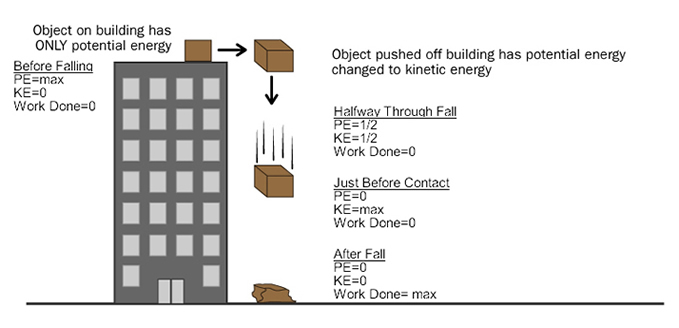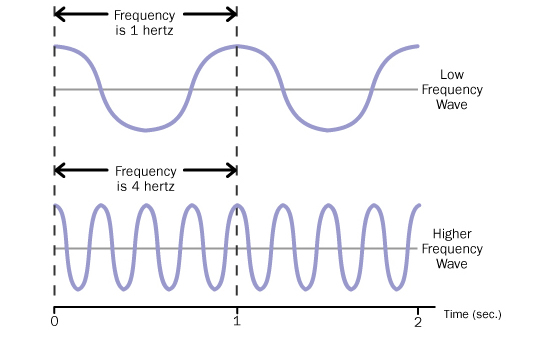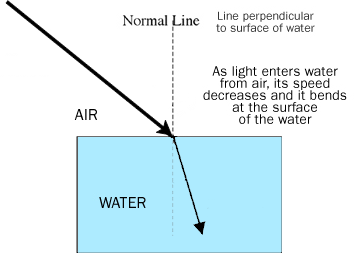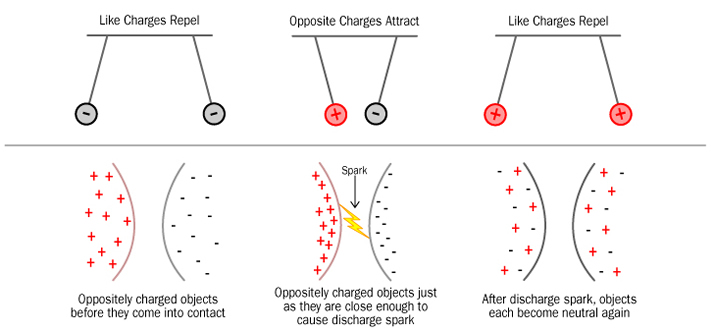 username@email.com
username@email.com
Now we will investigate forces acting over distances and work.
The previous sections discussed forces, masses, and velocities. We reviewed the concepts of inertia, momentum, force, and their interactions with objects’ masses.
The scientific definition of work is the product of the force applied to an object multiplied by the distance the object is moved under the influence of the force.
In equation form,
Work = Force · Distance
or

If a 70 N force is applied to an object and raises it 2.0 m vertically, what amount of work was performed on the object?
The correct answer is D. The work performed is equal to the force multiplied by the distance.
Energy is an inherent quality of every system in our universe – it is all around us. In physics, we describe energy as the amount of work needed to change the state of a system. This could mean changing a substance from a solid to a liquid, changing the volume of a substance, or the total pressure of a system. Although energy is easily transferred from one form to another, it is never lost or gained.
There are two fundamental types of energy, potential (PE) and kinetic (KE). When you carried the boxes up the stairs, the work you performed gave the boxes the ability to do their own work. You exerted a force and gave the boxes potential energy. If you dropped the boxes from where you carried them, they would fall, gain velocity, and could do work of their own; they would transform their potential energy into kinetic energy. Look at the equations and their units below and you will see that work and energy are exactly the same quantities.

The Law of Conservation of Work and Energy states that energy cannot be created or destroyed in a closed system. It can be transformed from one form into another, but the total amount of energy is always the same. Stated in equation form this becomes:
(KE + PE + Work) before an event = (KE + PE + Work) after an event
If you lift up the 50 kg box, you do work and give it potential energy by virtue of its position relative to the gravitational force of the Earth. If you drop it, the potential energy is converted into kinetic energy, and when the box hits the ground, the kinetic energy is transferred to the ground. But where did the kinetic energy of the box go? The crumpled box just sits there on the ground. It has no ability to do work and it is not moving. Where did the energy go? The energy did not disappear. The energy went into crumpling the box, changing the state of physical materials by breaking literally billions of molecular bonds, and to literally warming up the ground, albeit just a little. All energy is conserved.

Simple machines help us perform work by distributing the components of work into smaller parcels. A machine lets you do work in a more efficient manner and in less time. Using a machine requires the same amount of work as not using the machine, but the machine changes the way in which you perform the work. Using a machine makes your work easier by changing one or more of the following factors: the force you exert, the distance over which you exert the force, and/or the direction you exert force. If you use a machine to exert less force, for example, it will increase the distance involved in your work.
If you need to move a 50 kg box up to a high shelf, it is much easier to push it up a ramp than to lift it straight up. If the length of the ramp was twice the distance up to the shelf, you would only have to exert half the force of lifting the box, but you would have to push it up the ramp for twice the distance as you would lifting it. Using a machine makes your work easier, but it does not reduce the amount of your work.
You can also use a machine to apply a greater force than you could do by yourself, but you will have to exert a force over a longer distance. When you use a hammer to pry a nail out of a piece of wood, for example, your hand moves a much greater distance than the nail moves when it comes out. You actually generate a much greater force over a short distance (a tightly stuck nail moved a short distance) by applying less force over a greater distance.
All forces in nature can be classified into four basic kinds, each with a different relative strength. They are (listed in order of weakest to strongest):
Gravity is one of the two forces that dominate our everyday lives and is probably the most common force that everyone recognizes. Electromagnetism is the other dominant force in our everyday lives. The electromagnetic force acts between all particles that have electric charge. It is attractive for oppositely charged particles, and repulsive for particles of the same charge. The electromagnetic force is the ‘glue’ that holds atoms, molecules, and chemical substances together. The electromagnetic force is generally responsible for all forces involved when atoms interact. The weak nuclear force is most commonly seen in the beta decay of radioactive particles and named because it is relatively weak (109 times less than that of the strong nuclear force) and limited to distances smaller than an atomic nucleus. The strong nuclear force is the strongest of all forces and it is ‘glue’ that holds the protons and neutrons together in the nucleus of an atom. Although two protons (both being positively charged) repel each other via the electromagnetic force, the strong nuclear force overcomes the repulsive force within an atom and holds the nucleus together. Even though it operates at very short distances (within the nucleus of an atom), it is incredibly strong relative to the other fundamental forces.
Most of the information we receive gets to us in the form of a wave (sound waves, light waves, radio waves, etc.). Some waves travel through physical materials, and the material through which a wave travels is called a medium. Waves that require a medium to travel through are called mechanical waves. A mechanical wave is a particle disturbance that transfers energy from one place to another without changing the medium through which it travels. However, not all waves require a medium. Light waves travel from the sun through the vacuum of space to the Earth. Waves that do not require a medium to travel through are called electromagnetic waves. The basic properties of waves are wavelength, frequency, amplitude and speed.


Speed = Frequency · Wavelength
Assuming the medium does not change, the speed of a wave is constant. For example, sound waves in air (of the same temperature and pressure) all travel at the same speed. If the speed of a wave is constant and the frequency increases, the wavelength decreases by the same proportion.
What is the speed of a water wave on a lake that has a wavelength of 0.5 M and frequency 2 hertz?
The correct answer is C. The speed of the wave is the product of 0.5 m and 2 Hertz, or 1 m/s.
Waves interact with objects in their way, which can sometimes change their speed. The interaction between a wave and an impenetrable surface it strikes is called reflection. Examples of reflections of waves are the echo in a canyon or seeing yourself in a mirror. All waves behave according to the law of reflection so when a wave reflects from a surface, there is the incoming or incident wave and the outgoing, or reflected wave. The angle of the incident wave is called the angle of incidence while the angle of the outgoing wave is called the angle of reflection. The law of reflection states that the angle of incidence equals the angle of reflection.

When light strikes a mirror, the light reflects off the surface. The angles of the incoming light and the reflected light are always
The correct answer is A. The law of reflection states that the angle of incidence equals the angle of reflection. Although it is possible for the angles to add up to 90 degrees, it is not always the case. Under normal circumstances, it would be impossible for the angles to add up to 180 degrees.
Have you ever driven slightly off the edge of a road only to notice that when the car wheels come just off the pavement your car suddenly turns slightly? This happens because the first wheel to hit the soft shoulder of the road slows down while the other wheels stay the same speed. This change in speed between different wheels causes a change in direction. As in the example, when the speed of a wave changes while passing from one medium into another, the direction of the wave changes. This is called refraction. Refraction is the change in direction of a wave due to a change in its velocity.
The Law of Refraction states that when a light wave enters a new optically transparent medium at an angle other than perpendicular, one side of the wave changes speed before the other side, causing the wave to change direction (or bend relative to a stationary object). However, refraction does not always occur when a wave changes media. When a wave moves from one medium into another, the wave bends, but only if it enters the new medium at an angle that is not perpendicular to the surface.
Refraction is not so important a phenomenon with mechanical waves as it is with light where it is responsible for image formation by lenses, the eye, cameras, etc. Bending of mechanical waves occurs when mechanical waves encounter a barrier in which there are openings or when they move along the side of a physical barrier. The waves slow because of friction and they change their direction of motion.


According to the Doppler Shift, what happens to starlight seen on the Earth when that star is moving away from the Earth?
The correct answer is C. A Doppler Shift in starlight arriving at the Earth is the increase in wavelength of an individual color within a star’s light and the decrease of frequency of the waves. The star’s motion away from the Earth causes the wavelengths of its light to increase over what they are at the source. The increase in wavelength can be accurately used to measure the speed that the star is moving away from the Earth and how far away the star is from the Earth.
Electromagnetic radiation is wave energy that has both electric and magnetic aspects. The spectrum of possible types of electromagnetic radiation is quite broad and includes all of the ways in which humans communicate. There are radio waves, microwaves, infrared rays, visible light, ultraviolet rays, X-rays, and gamma rays, listed in order of increasing frequency. These electromagnetic waves are all around us all the time, but the only wavelengths our eyes sense is what we are most familiar with – visible light. Only a very small part of the electromagnetic spectrum is visible light.
Electromagnetic waves with frequencies lower than visible light are radio waves, microwaves, and infrared waves (thermal). Waves with higher frequencies than visible light are ultraviolet rays, X-rays, and gamma rays. The waves with higher frequencies have higher energy, and hence, the more hazardous they can be.
Radio waves and microwaves are used for the broadcasting of information and entertainment through the atmosphere. Microwaves are also used to cook food and create cellular telephone transmissions. Infrared waves are known for their heating capacity. Infrared waves are just below the visible-light part of the spectrum, and although you can feel infrared waves, you cannot see them. Common uses are heat lamps and infrared cameras that can detect heat. Continuing down the spectrum, visible light ranges in both wavelength and frequency. The lowest frequency visible light is red. As the frequency increases the color of the light changes to orange, yellow, green, blue, and violet. All the different frequencies (colors) in the white light refract (change speeds) differently and bend at different angles causing a rainbow to form.
Ultraviolet waves have high enough frequencies (and energy) to be hazardous. In small quantities, they are used in the human body to produce vitamins and increase the amount of epidermal melanin. However, excessive exposure causes sunburn, eye damage, and changes in tissues and organs (including cancer). X-rays have still higher energy, easily penetrating soft tissue in a human body (but not through bone), allowing doctors to see bony formations inside the body and to diagnose and treat many health problems. X-rays are more dangerous than ultraviolet waves and thus must be used sparingly – which is why you probably get dental X-rays only once a year and wear a heavy lead apron to prevent exposure to the rest of your body. X-rays are also used in industrial engineering applications such as looking for cracks in the steel supports of a concrete and steel structure.
Gamma rays are the shortest wavelengths and the highest frequencies (and energy). Because they are the highest energy waves, they have the highest penetrating power on the electromagnetic spectrum, and are the most powerful. Because of the penetrating nature and the tissue damage that comes along with it, gamma rays are used to kill cancer cells within the body and are carefully focused as much as possible to not impinge on nearby healthy tissue.
As the wavelength of electromagnetic waves decrease, what happens to the frequency and the energy?
The correct answer is A. As the wavelength of electromagnetic waves decrease, the frequency increases, because speed = wavelength · frequency. The speed of an electromagnetic wave is a constant (under most conditions) and therefore the wavelength and frequency are inversely proportional to each other. Also, as frequency increases, energy increases.
Have you ever pulled a blanket out of your clothes dryer to find a sock stuck to it? What is holding them together is the force of electric charges.
We have previously learned that protons and electrons have opposite charges, and that protons are positive and electrons are negative. When two protons come close together, they push each other apart. The same is true for two electrons. However, if an electron and a proton come close together, they attract each other. They attract each other because they have different charges and in nature, opposite electric charges attract each other. They do so with an electrostatic force. Every electric charge has an electric field extending around it; an invisible region where the object’s electric force is exerted on other charged objects, without the two objects coming into contact. When a charged object is placed within the electric field of another charged object, it is either attracted or repelled depending on the type of charge. The strength of an electric field depends on the distance from the object. The greater the distance from the charged object, the weaker the electric field becomes.

Static electricity on an object does not stay there forever. It discharges. Electrons move from or to charged objects in such a way as to remove the charge on the objects (make them neutral again). When two oppositely charged objects come into close proximity or contact, they discharge in the form of a spark of electricity. You have probably felt the effects of this yourself. Lightning is a dramatic example of static discharge. During thunderstorms, air and water droplets swirl violently and water droplets become charged. To restore their neutral condition, electrons move from an area of excess negative charge to an area of excess positive charge and produce an intense spark such as lightning. Some lightning reaches the ground because negative charges at the bottom of storm clouds may give the ground a positive charge. Electrons will jump from the clouds to the Earth’s surface, producing a giant spark.